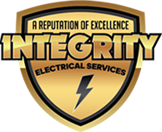Do you need to rewire a house or update the electrical panel to 150 or 200-amp?
Rewiring your entire house may be the first thing an unreputable contractor tells you to do, as this is a major job that they can charge you the most money for. But the truth is, you may not need every room rewired. Upgrading your electrical panel to a 150 to 200 amp panel may fix your problem. In some cases, a complete house rewiring is necessary.
And in many cases as of 2021 in Massachusetts (MA), 300-400 amp panel upgrades may be required. The owner of Integrity Electrical Services, Joe O’Connell, pointed out that “In areas in MA, due to the push towards electric (including Lexington and Arlington MA) heat pumps are now required, which puts an end to fossil fuels. This is going to require a lot of homes to upgrade to 300 and 400 amp services.”
“This is part of the Biden Administration’s massive infrastructure proposal to reshape the U.S. economy and build out clean energy infrastructure as part of a broader effort to curb climate change.”
” According to Mass.Gov, the “Pace & scale of retrofits: nearly 100,000 homes installing heat pumps or other renewable thermal systems each year for the next 25-30 years.”
Only a licensed electrician can truly provide you an accurate description of what needs to be done and the true cost of electrical service upgrades. The cost will vary depending on each person’s unique situation.
Was your home built with knob-and-tube wiring?
If your home was built in 1945, it was most likely built with knob-and-tube wiring that can no longer pass an inspection because it’s not code-compliant and can be an electrical hazard. In this case, the old wires may need to be pulled out, walls cut open and you may need a complete home rewiring. A job like this can be very expensive.
Your Guide to Rewiring a House Vs. Panel Upgrades

The following guide will help you understand when it’s time to upgrade an electrical panel or rewire a house.
BONUS: How to Upgrade an Electrical Panel
As a BONUS, we’ve provided fifteen steps on “How to Upgrade an Electrical Panel to a 200-amp Panel” (with tutorial pictures included). The reason for providing these instructions is to give you an idea of what your electrician will be doing after getting hired to upgrade your electrical panel. Of course, the instructions listed below vary from job to job, but again we’re just trying to give you a basic understanding of what an electrical panel upgrade job consists of. Do not try to upgrade your electrical panel on your own, which can be extremely dangerous to do.
Benefits of Rewiring Your Home and Upgrading the Panel Box
- Save money on your electric bill.
- It could be needed to Qualify for homeowners insurance.
- Eliminate annoying electrical issues (e.g., flickering and dimming lights). Keep in mind, just because your lights are flickering does not mean that your home needs to be rewired.
- Improve your home’s safety (one malfunction due to an outdated electrical system could result in a fire).
- Have extra available circuits (e.g., many residential homes need an electrical panel upgrade before installing a Generac generator, EV charger, or even a new jacuzzi)
- Give your home a more robust electrical system.
- Increase the value of your home (As an example, if you were to upgrade your electrical panel to a 200-amp and get a Generac generator installed, these two moves alone could increase the value of your home by over $10,000.)
- The breaker panels and switchboards available in 2021 are also aesthetically pleasing.
Before and After:
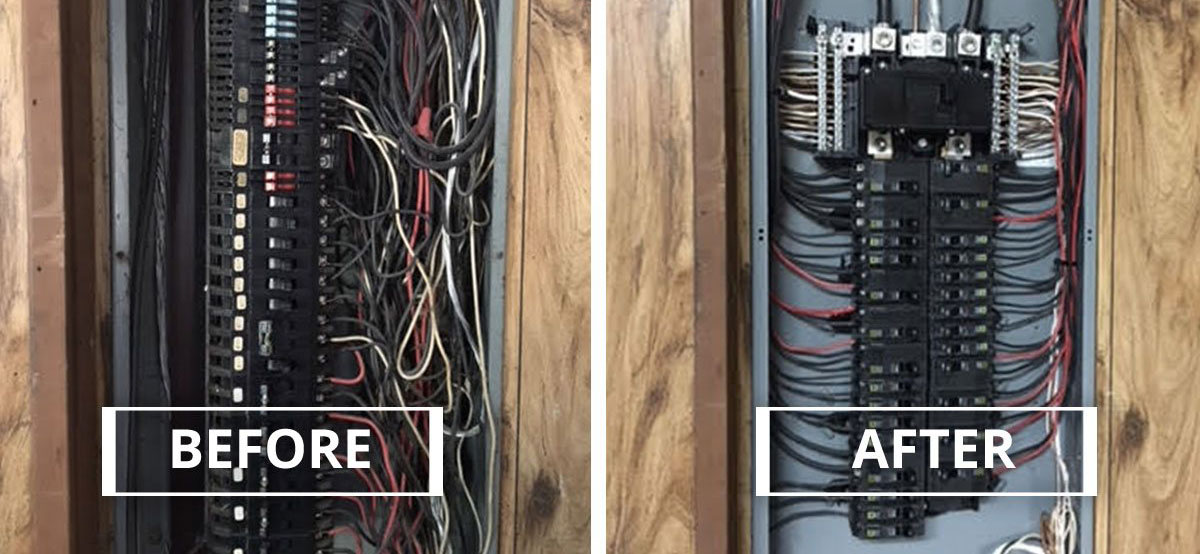
At the very least, peace of mind comes with a freshly rewired home. But the truth is, you may not have to rewire the entire house. Rewiring the entire house can be an extensive project, even for an experienced electrician.
What’s more expensive rewiring a house or a panel upgrade?
The cost of rewiring a house is significantly higher than the cost to upgrade an electrical panel. Walls may even need to be knocked down and put back up.
So before you assume that it’s time to rewire the house, let a licensed electrician from Integrity Electrical Services come to your location and provide you with an honest evaluation.
At Integrity Electrical Services, our MA licensed electricians will give it to you straight. Call today at (978)-761-5978 to discuss your project. There’s a reason why Integrity Electrical Services is 5-star-rated on Google
How do I know if I need to upgrade my electrical panel?
Forty years ago, 60-amps would be sufficient for a single-family residence. But in 2021, licensed electricians will recommend no less than a 100-amp electrical panel for the same home. And even a 100-amp panel is usually not sufficient for today’s technology-packed homes. “100-amps is the minimum panel amperage required by the National Electrical Code (NEC), but 150-amps is increasingly common. While 100-amps to 150-amps are generally suitable for most homes, electrical panels are also available in 200- and 400-amp units.”
Most new homes as of 2021 are built with 150-amp to 200-amp panels. Technically speaking, a 100-amp panel is enough for most homes of 3,000 square feet or less. However, if your house has energy-hungry appliances such as an electric water heater, a generator, a hot tub, an EV-charging station, multiple bathrooms with appliances, air conditioners, and multiple televisions – a 200-amp electrical panel will ensure your electrical capacity is sufficient to handle everything.
Signs That Your Electrical Circuit Panel Needs Replacement
If you answer “yes” to any of the following questions, then it’s time to consider upgrading your electrical panel today.
- Are you experiencing frequently tripped circuit breakers and blown fuses?
- Is the electrical panel warm?
- Experiencing flickering lights?
- Do you notice that your lights go dim at certain times?
- Do you hear crackling noises or buzzing coming from your outlets?
- Do you have a fuse-based electrical panel?
- Is your panel or home older than 20 years?
- Do you smell anything strange coming from around the area that your panel is located?
- Have you ever had water damage around the electrical panel?
If you answered “yes” to any of the following questions, call Integrity Electrical Services today at (978)-761-5978. Don’t take a chance with your family’s safety when you have reputable electricians a phone-call-away to call. Integrity is known for its high-quality work, reliability, and affordability.
Integrity Electrical Services Credentials:
- BBB A+ Rated and Accredited
- A Massachusetts Licensed Electrician
- The top-rated electrical company near Wilmington, MA on Google (5-star average rating)
Can I rewire my house myself or upgrade my electrical panel on my own?
Next, we will provide more detail on why it’s not advisable to rewire a house or upgrade the electrical panel on your own.
First off, let’s assume you know what you’re doing. Rewiring a house on your own can take weeks, cutting, drilling, running wires, and patching holes. Do you have that type of time on your hands?
More importantly, upgrading your electrical panel can be a dangerous, potentially life-threatening job if you make a mistake.
And thirdly, rewiring a house involves more than just replacing an old wire. It can be more costly in the end when trying to rewire your home on your own; imagine if you drill a hole in the wall also accidentally drilling a hole into a significant plumbing pipe.
A story in The Washington Post explains, “It’s important to realize that the actual aspect of nailing up boxes and installing the cables is not overly physically taxing. The challenge is to do the work to meet or exceed the complex National Electrical Code (NEC) by the National Fire Protection Association… The NEC requires certain circuits in the house to be fed with wires to handle a maximum amperage. For example, kitchen countertop circuits need to handle 20 amps. An electric clothes dryer almost always calls for a cable that can handle 30 amps. Your electric stove/oven may need 40 or 50 amps. The NEC allows many normal outlet circuits in a house to be 15 amps. You can’t mix and match wire sizes on circuits. All the wires/cables on a specific circuit protected by a circuit breaker must match the rating of the breaker… Are you confused yet?”
Integrity Electrical Services does not recommend even attempting to rewire a house or upgrade an electrical panel on your own. Having said that, you should understand the basic steps involved in upgrading an electrical panel so that after you hire a licensed electrician to assist you on the project, at least you’ll have an idea of what they are supposed to be doing.
How to Upgrade Electrical Panel to 200-amp (15 steps)
Starting on the outside of the house:
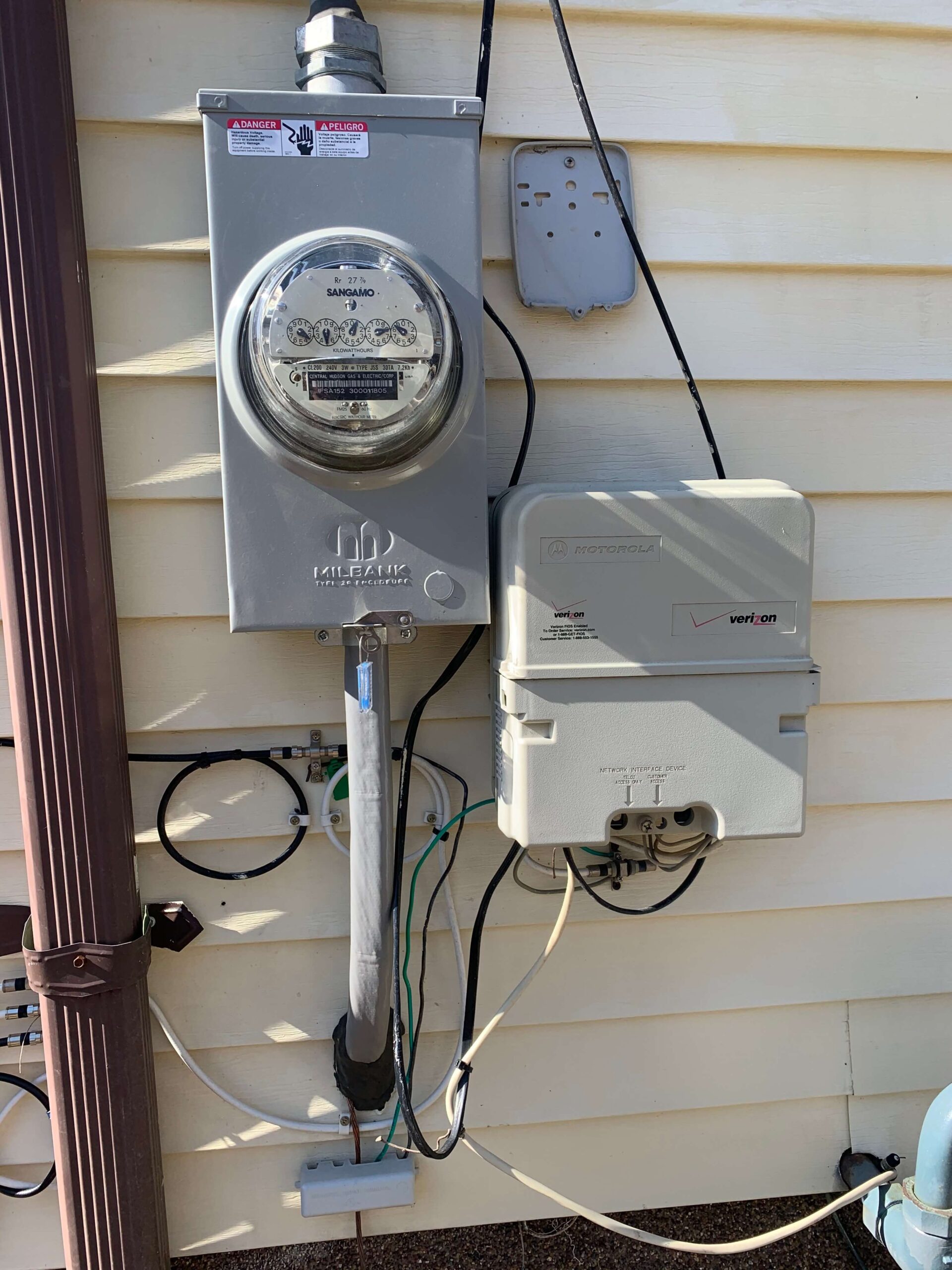
Step 1:
Make sure a licensed electrician understands what’s required to pass inspection, including all required codes. Some states require you to use a licensed electrician to rewire a house. Make sure to ask relevant questions to this point.
Step 2:
Call the utility company to disconnect the power. Also, use a tester to make sure the power is off.
Step 3:
The old glass meter from the meter socket on the outside of the house needs to be removed.
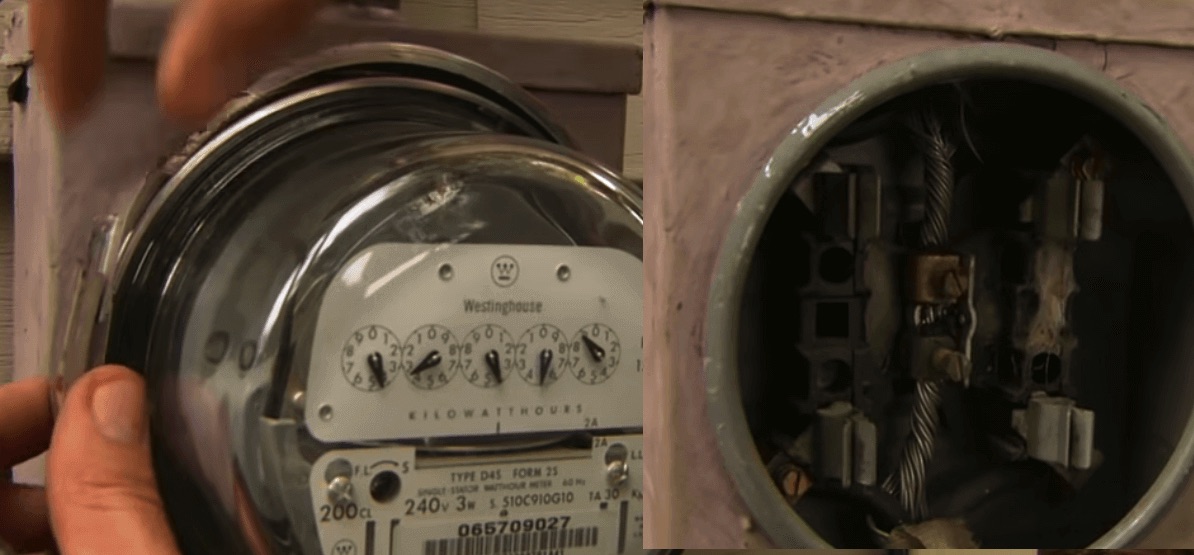
Step 4:
The new meter socket Rated for 200 amp needs to be added on the outside of the house.
Step 5:
Connect the new 200 amp Service Entrance Cabel (where the power flows) to the new meter socket. The meter socket runs that wire from the outside of the house to the new panel located inside the house.
You will first have to drill a hole in the house to fit the larger 200 amp wire, using a diameter hole saw.
Moving to the inside of the house where the old electrical panel box is located:
Step 6:
Cut out old wires from the old panel inside the house.
Step 7:
Unscrew the old panel.
Step 8:
Screw in a large piece of wood (the platform) for the new larger panel box that will be getting installed.
Step 9:
Screw-in the new panel on the new platform (must be leveled).
Step 10:
Pull through cable from the outside and tighten it into place on the new panel located inside.
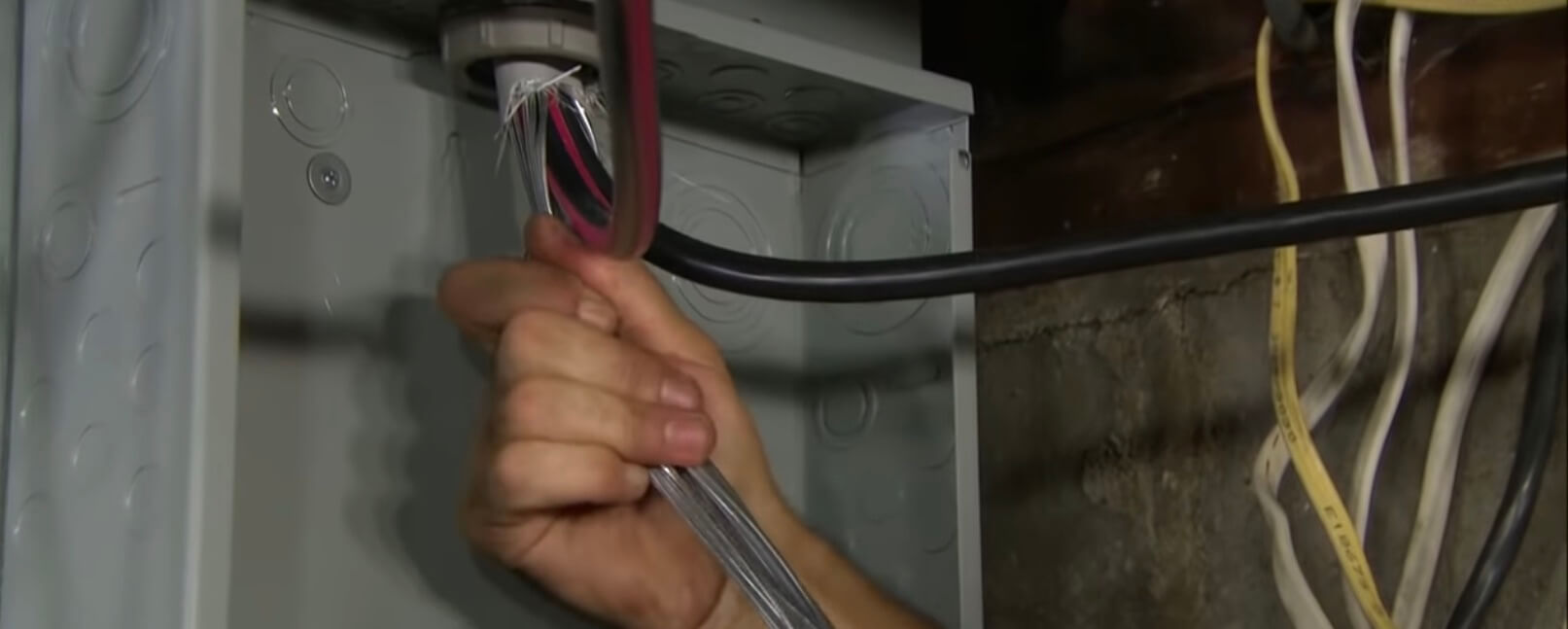
Step 11:
Brade the bare aluminum wires together as one that will be your neutral and tie it into the neutral busbar.
(Make sure your electrician uses some oxidation prevention gel on the wire.)
Step 12:
Connect the two power wires to your electrical panel.
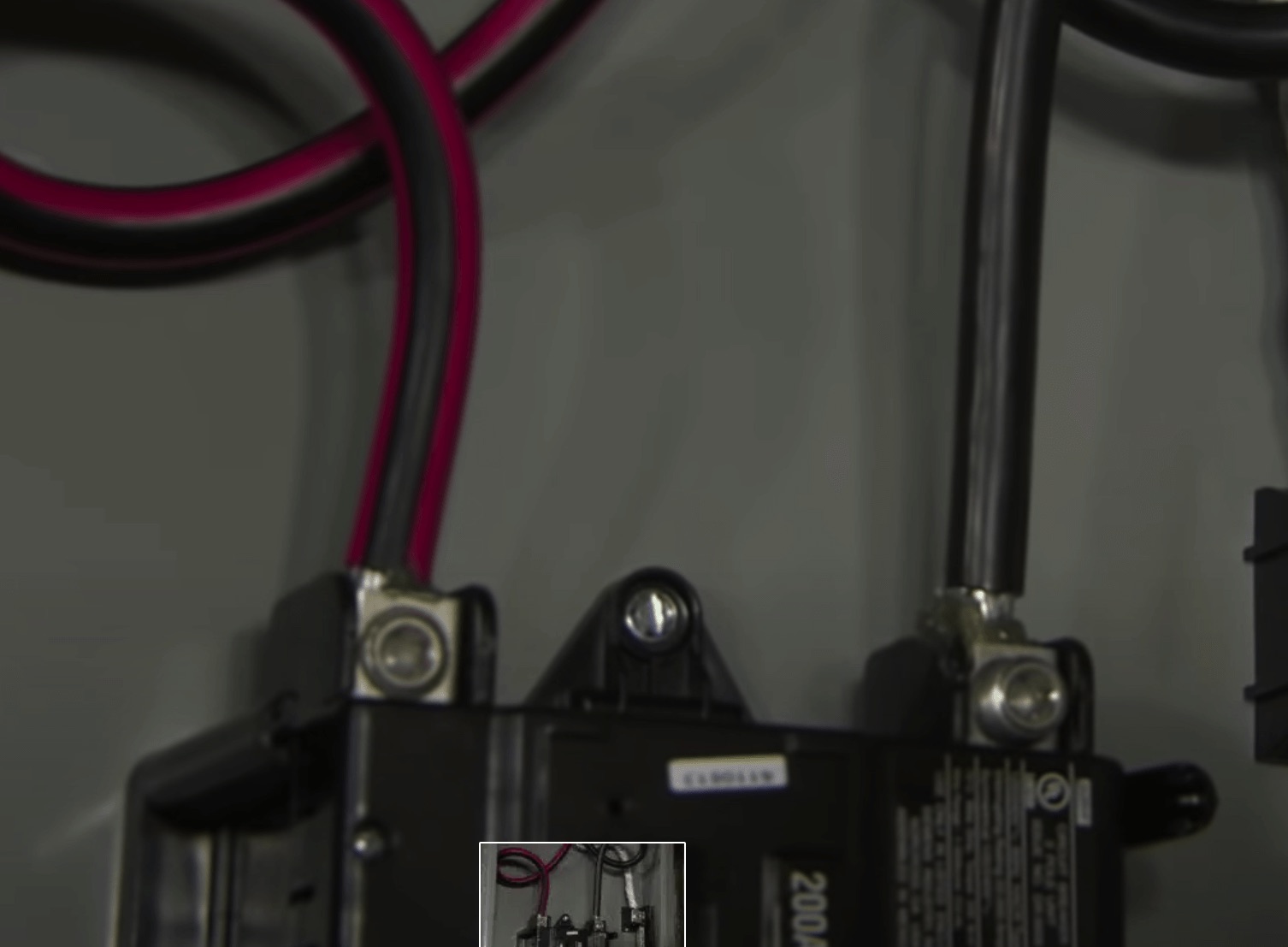
Step 13:
Take the bare wires (Grounds) and white wires (Neutrals) and connect the neutral and ground bar on the sides of the panel.
Step 14:
Install circuit breakers to prevent wires from overheating.
Step 15:
Call power company and reconnect service. Then turn on breakers, and you’re done! Make sure your electrician labels your breakers for you.
Again, these steps are being provided to give you an idea of the process involved with updating an electrical panel. Much more detail is involved with this job than what’s being explained in the fifteen steps above.
Additional tips to consider when upgrading your electrical panel:
- Make sure to level the equipment you are putting on the outside and inside the house, including the panel.
- Protect the wires on the outside by covering them with PVC conduit.
- Use proper ground rods on the outside for safety.
- Make sure to map all of your property’s underground utilities before driving ground rods into the ground to avoid hitting underground pipes, like gas and water pipes.
Questions to ask your electrician before hiring them:
- Will they be conducting an electrical inventory and framing the parameters of the job?
- Will they evaluate what is behind your walls before they start drilling holes?
- Do they understand the local laws and codes? You will have to pass an inspection in the end!
- What permits are needed for the job?
Only a professional and licensed electrician can be trusted to provide you with an honest evaluation of whether or not your home truly needs a full “home rewiring.” Don’t just hire any cheap electrician or do it yourself (DIY) electrical contractor that you find online; check the company’s reviews on Yelp, Google, and BBB.
How much does it cost to upgrade a circuit panel?
Call a local and licensed electrician at Integrity Electrical Services today at (978) 761-5978. We can give you an estimate on the cost to rewire your home and upgrade the electrical panel if that’s what is needed.
Sources:
Home Depot, https://www.homedepot.com/c/ab/how-to-buy-electrical-panels/
This Old House Youtube channel
